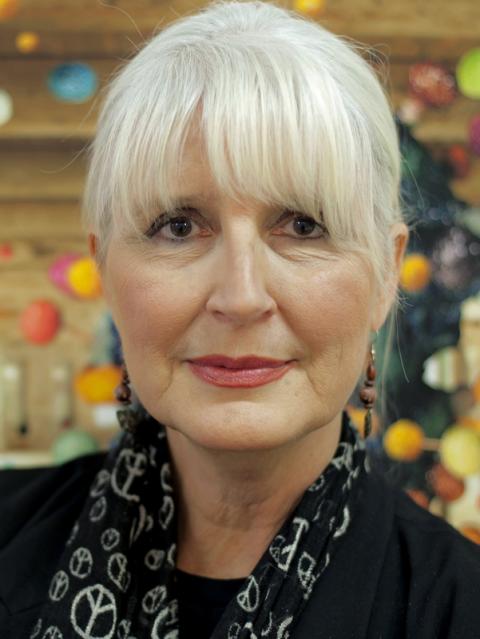Karen Blessen Pulitzer Prize Winner
BFA, 1973
Karen Blessen is a Pulitzer Prize winning journalist and artist. In 1989 she was the first graphic artist to be named as a Pulitzer winner. She is from Columbus, Nebraska, and graduated from UNL in 1973 with a Bachelor of Fine Arts.
She came from Columbus with the vague goal: “I want to be a great artist.”
At UNL, she was fortunate to work at Sheldon Art Gallery under the leadership of Norman Geske and Jon Nelson. Their infectious enthusiasm for art and beauty captured Karen and solidified her commitment to the value of the arts in our world and to her own life in the arts.
Her professional life is divided into two chapters. In the first decades of her career from 1973 to 2005, she worked as a free-lance artist and writer. Her work has appeared in the Dallas Morning News, Times Square, books for GP Putnam & Sons, Simon and Schuster and many others. She considers herself fortunate to have been given many opportunities. She aimed to rise high to the challenge of each project.
She looked to the lives and work of great women artists for guidance. Artists such as Eva Hesse, Helen Frankenthaler, Alice Neel, Beatrix Potter, Georgia O’Keefe, Grandma Moses, and Frida Kahlo inspired her. She was fascinated by the etchings of Francisco Goya, the paintings and collages of Matisse, and the contemporary work of Anselm Kiefer.
In August of 2000, her life was disrupted and the second chapter of Karen’s career was ignited. The organization 29 Pieces was born.
The seeds of 29 Pieces were planted with a bullet, the bullet that murdered a man in front of Karen Blessen's house.
Karen reacted to the tragedy using the tools of her profession. The result was ONE BULLET, a piece that she wrote and illustrated for the Dallas Morning News, exploring the act of violence and tracing the path of its impact on the victim's family, the killer's family, the law enforcement community and the community at large.
Karen soon realized that telling the story wasn't the end of her responsibility; it was the beginning. She had to act to help keep the narrative from repeating itself over and over.
Once again, she turned to a tool she knew—art—with hopes of using its power as a catalyst for peace. Engaging, involving and inspiring our community's youth to learn, share and live the lessons of peace became the unifying goal of the organization known as 29 Pieces.
Since its inception in 2005, 29 Pieces has grown in number and impact. 29 Pieces: Artists Making a Kinder World workshops and classroom curricula have helped tens of thousands of students and adults develop their creativity and their love of peace. 29 Pieces’ Dallas Love project used art to turn the city-of-hate perception upside down during the Kennedy assassination's 50th anniversary year. The Piece 24 project united a coalition of business leaders, community leaders and local schools to help students create a 20-foot mosaic sculpture—a monument to peace that will has a permanent place within the community.
What all 29 Pieces efforts have in common is the use of art as the power source for beating swords into plowshares and planting new seeds of peace. 29 Pieces created an 18-lesson curriculum on lessons such as RESPECT, FORGIVENESS, CURIOSITY, GREAT PEACEMAKERS, LOVE and more. More than 400 teachers have been trained in 29 Pieces Education lessons. 29 Pieces hopes to offer the entire curriculum on a digital platform, at no cost to users.
29 Pieces is currently at work on the next public sculpture – based on the Mahmud Shabestari poem, Radiant is the World Soul. 29 Pieces is also collaborating with the University of North Texas to develop a city-wide project that gives voice to the motivation and needs of teachers.
Nothing that 29 Pieces does will right the wrong of the murder that started this process. 29 Pieces works to change what happens next.
Spanning both chapters of Karen’s career is the practice of keeping written and visual journals. She is currently in the process of archiving more than 65 journals.
